Spruce is a good solution for landscaping. Throughout the year, such a tree will decorate the garden or the courtyard, making it bright and beautiful. Evergreen Beauty is a find for landscape designers. After all, it perfectly gives up the formation of the crown, especially decorative forms. And this allows you to create real masterpieces of design art on the site. In this article, we consider the most popular spruce - Canadian, which occupies a special position throughout the family due to its decorative properties.
Features and description Spruce Canadian
Canadian spruce belongs to the family of pine and is one of its most common species. This fir has several more names. Often it is called Canadian Sizai Or Spruce or Spruce, as well as such a name like a spruce. North America is considered homeland, namely Canada. Hence the name of the coniferous tree and itself. Eugene was delivered to Europe in 1700, since then it has spread throughout the mainland, including it became cultivated in Russia.
This type of coniferous trees especially faced landscape designers, because Canadian spruce has many forms, including dwarf. And they are the perfect option for decorating the site.
Description fir Canadian:
- This type of conifer is a tall tree, height can reach 25-30 meters. However, there are dwarf varieties that do not exceed the half-meter.
- Canadian spruce is distinguished by the correct conical form of the crown, which is a decorative value.
- Especially rapidly growing at younger age, in the first 10 years. And then the growth of ate slows down.
- The young firings the branches are raised and adjacent to each other tightly, the old one is slightly omitted down.
- The color of the needles from the Canadian ate green with a jack. With these are connected another name - szing fir.
- The needles are very short and barbed.
- Fruit firing Canadian after 10 years of growth. The cones have an oblong shape, very decorative.
- Canadian spruce is a long-liver, the average age of it is 300-500 years.
- Winter hardy and drought-resistant.
- It is widely used in landscape design for landscaping, creating live elevations and garden compositions.
- To date, 20 decorative species of Canadian ate are known.
Photo of Canadian ate in landscape design
Canadian spruce is valued for its decorativeness and is a special decoration of any site. On the presented photos, it can be noted the features of the use of ate in the design of the site.
Canadian spruce in the landscape composition
Growing Canadian ate in containers
Canadian fir in stony gardens
The main varieties of Canadian ate
In landscape design, both the natural form of Canadian ate and many decorative species derived specifically for landscaping plots are used. There are 20 decorative forms of Canadian ate, which are characterized by a height, color of needles and their individual features.
Canadian Spruce Conica.
Canadian spruce spruce is the most common and popular fir. Such love for this coniferous tree is caused by its size - this fir refers to dwarf forms and is an ideal solution for decorating the site. Height can reach 1.5-2 meters, rarely grows up to 2.5 m. It is possible to plant ate of Canadian conic to open ground in stone gardens or containers.
A spruce has a dense cone-shaped crown, so the main care of the Canadian conic fir is in the formation of the shape of the needles. It is its ideal needle form that is a special value for landscape design. Such a spruce is planted on outdoor solar sites or in a half. Thanks to its properties and frost resistance, it is perfect for growing in the middle strip, but with the condition of shelter for the winter. It grows slowly, which is perfect for many gardeners.
Canadian spruce Alberta Globe
The Canadian Spruce Albert is also a dwarf form, ideally suitable for landscaping. Different with a ball shape of the crown. The shoots of this tree are short with a short joy on them. Red needles. This variety of Canadian ate slowly, the annual increase is 2-4 cm. Great for growing in containers or for landing in alpinearia. The variety was led in the Netherlands.
Spruce Canadian Blue Planet
Such a Christmas tree is really a very small tree. For 10 years, the diameter of the crown reaches only 20 cm. Crown has a ball shape, the needles is very short. Differs silver-blue. It is a good option for disembarking into containers, as well as for designing alpine slides. It must be planted on solar places, otherwise the shadow can lose a bluish color.
Canadian Spruce Daisy White
Canadian fir Daisy White with its appearance very much resembles a conic, as it happens exactly from this variety ate. Crown has a cone-shaped form. By 10 years in height reaches 80 cm. Spruce Canadian Daisy has its own feature - the first shoots have yellow-white color, which then burns into the sun. Already in the second year, the branches become green.
Canadian fir grade Echiniformis
This is a low grade ate, which grows very slowly. An adult plant of Canadian ate Echinforisis reaches only 50 cm in height, to a width can grow to 1 meter. It has a spherical shape of a bluish green crown. Suitable for mountaineering or containers.
Canadian Spruce Laurin.
Refers to the dwarf varieties of needles. It grows very slowly, over the year it grows only 2 cm. By 10 years, the height is about 40 cm. Differs in a narrow conical crown and bright green cheese.
Canadian Spruce Sanders Blue
Spruce Canadian Sanders Very similar to the most popular variety - conic. It has the same proper cone-shaped crown and is a dwarf variety. A distinctive feature of this variety is considered a blue tint of needles. It looks wonderful in small gardens.
The above-mentioned varieties of Canadian ate are only part of the species diversity that are used in garden landscaping.
Methods of reproduction of Canadian ate
There are two main methods of breeding ate Canadian - this is a reproduction of seeds and stalling. Any of these methods is a rather time-consuming and long-term process, as it is very difficult to grow a seedling of Canadian ate. It takes a lot of time and requires constant attention and care.
Reproduction of seeds
This method is very difficult to apply at home, as the result will have to wait for a very long time. First you need to prepare seeds. You need to take fresh - they will come better. Seeds are collected from non-discovered cones. Then select the best and conduct stratification. For this, planting material can be placed in a mixture of sand with peat and put in the refrigerator for 4-6 weeks.
After hardening with cold, the seed capacities are placed in a warm and light place and abundantly watered. It is best to choose the end of winter or the beginning of spring for germination. Be sure to watch the sprouts to be flooded, otherwise they can start grew. In the open soil spruce Canadian land just for the second year.
Pencornia reproduction
The cultivation of Canadian spruce from cuttings is also a long process, but more reliable and gives good results. The best time to start the rooting of Chenkov - June, as they have time to strengthen until winter. At this time, calluses appear on cuttings, and the first roots appear from it only the next year.
- For cuttings is necessary to find the right branches. Usually the parent tree branches torn matured at the bottom. Their height should be approximately 10-12 cm.
- Separate the cuttings must be properly - make sure that the twig was definitely a "promenade", with part of the mother tree. Without it, the young plant is not accustomed.
- Further it is possible to treat planting growth stimulants, such as "Kornevin". To this solution was poured into a jar and is lowered there cuttings to 2 cm. Hold can be 2 hours a solution. Thereafter, this solution can be diluted in water and used for watering cuttings.
- As a primer can be a mixture of peat and sand.
- Cuttings bury the prepared substrate by about 2-2,5 cm and covered with a film, pre obryznuv water. This must be done to maintain the necessary humidity.
- Be sure to keep an eye on soil moisture, it does not dry out.
- To get ready seedlings may need 4-5 years.
Preparation before planting
For the future a beautiful and healthy pine tree necessarily need to prepare thoroughly before planting. Particular attention is paid to the selection of high-quality seedlings and a place for which they want to plant.
Seat selection
Most often spruce seedlings acquired in special nurseries or for professional gardeners who are engaged in cultivation. When buying seedlings spruce stick to certain rules:
- Needles should be thick and shiny without dried needles.
- Pay attention to the soil in the container - it should be kept moist.
- Out of the pot should not stick out the roots and the container should be large enough for a full seedling growth.
- If seedling dig out of the ground, pay attention to the roots. They must be safe and sound.
- If you are self-grown plants, carefully digs them not to damage the root system.
Choosing a place
All varieties of spruce prefer to grow in sunny and open spaces. However, perfect and partial shade. Pritenenie especially necessary for young firs, which can cause burns. Planted in the shade of pine needles may grow more slowly and lose their natural color of pine needles. The choice of landing sites depends on the selected type and your ideas. Dwarf varieties are ideal for decorating the garden paths and planting in containers. Higher trees become fine design element composition.
The selection and soil preparation
An excellent soil for planting Canadian ate will be loam and soils with a rich content of humus. Be sure to follow the Earth not too filled with lime. Spruce Canadian prefers to grow in well-wetted soils, so the earth is necessary, which will hold moisture. Drainage will contribute to this.
Food planting process Canadian
The landing time directly depends on the planting material. If you purchased a seedling in the container, then the best time for its transplantation from spring to autumn. When digging seedlings in the nursery from the ground - from mid-April to mid-May. The main thing is that the young tree in a new place has managed to let the roots before the onset of the cold.
Planting process:
- It is necessary to prepare the landing pit. Usually, the deepening is made one and a half times higher than the earthen com.
- The root system must be abundantly pouring water.
- A special soil mixture is prepared or you can buy it in a specialized store. A mixture of fertile land, compost and garden soil is suitable for Canadian ate.
- At the bottom of the pit, be sure to place a layer of drainage from broken bricks or small stones.
- Further, a seedling is placed in the pit and the land is gradually rewritten. You can pour part of the soil, compact it and pour it. Then pour the land again.
- When falling asleep the Earth into the landing pit, remember that the root neck should not be broken.
- The land around the plant can not be sealing, since the root system of Canadian spruce fit into the surface.
- After planting a fir, it is necessary to hide abundantly.
- Then the rolling circle is mounted with a compost or peat.
Features of the care of Canadian fir
With proper and constant care, you will get to grow a beautiful tree that will decorate your site.
Watering
Canadian ate is considered drought-resistant trees, but this refers to adult plants with a strong root system. The young trees need an insecurity, but abundant irrigation. Usually one tree needs to use 10-12 liters of water. Watering special attention should be paid at the autumn time, since it depends on whether the tree will survive. Most often, a fir dries in winter not because of frosts, but because of the lack of moisture. Canadian spruce also loves when she watered the crown.
Mulching
Mulching helps to retain moisture, and also contributes to the preservation of a certain temperature. In addition, with the mulch, the growth of weeds slows down. Usually, under the layer of mulch, rainworms are multiplied, and they help loosen the soil. Therefore, you should not neglect this stage of care. As a mulch, you can use a bark, sawdust, chip or peat. The mulch layer must be 4-5 cm.
Undercalinking Canadian ace
Canadian spruce does not require compulsory fertilizer, but if desired, you can feed. Fertilizers need to be made in spring or no later than July. Comfort or complex mineral fertilizers can be used as feeding. However, make sure that fertilizers do not contain a large amount of nitrogen. He is a Canadian ate contraindicated.
Pruning ate and crown formation
Most of the varieties of Canadian ate are decorative forms, so they need trimming for the formation of the crown. By itself, spruce has a dense and correct crown, but some correction is necessary. This trimming is carried out once in the season. Sanitary trimming is most often carried out, during which dry and damaged branches are removed.
Diseases of Canadian ate and pests
Diseases:
- Tracheomecosis. This is one of the most serious diseases of the Canadian ate. It is a fungal disease that affects the root system. Because of this, the plant does not receive the necessary nutrients. Most often, young fir trees are affected, when the needles bloom and falls. In this case, it is impossible to help the tree, it is digging and burned.
- Slace sickness. With this fungal disease of the needles, black and pops. Cerencing a tree with a solution of copper mood.
- Rust. In this case, yellow growths and needles appear on the branches. Special preparations are used that are used for a month.
Pests:
- Coroede. This pest is powered by wood and lives under the bark of the tree. In the same place he postponing his larvae, which are later eating with wood. Damaged wood rarely can be saved.
Canadian spruce dries with an excess or lack of moisture, as well as in the wrong place of landing. Especially when planted in a sunny place without shade. Therefore, it is important to properly care for evergreen beauty to get a beautiful and healthy tree.
Canadian spruce is an ideal representative of coniferous for landscaping. Due to the diversity of forms and varieties, it can be grown in both the outdoor ground in the form of a living hedge or joint fit and in containers for decorating the terraces. Having attached a little effort and patience, you will get a wonderful tree that will delight you all year round.


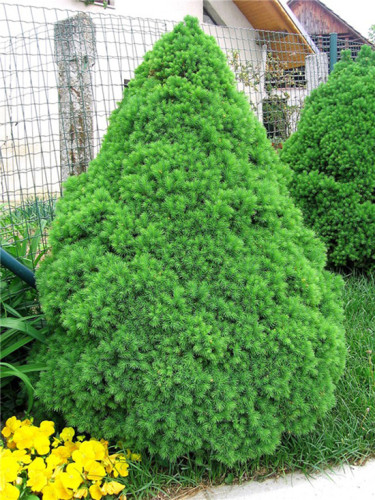
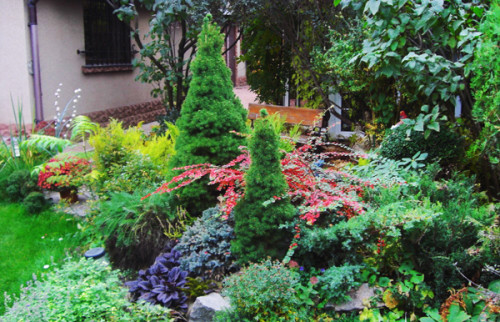
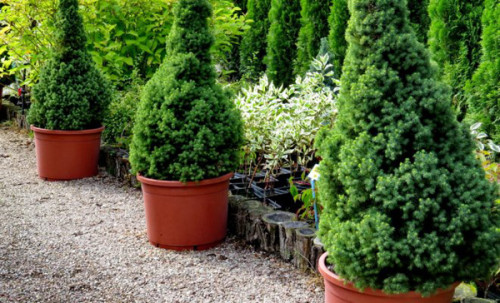
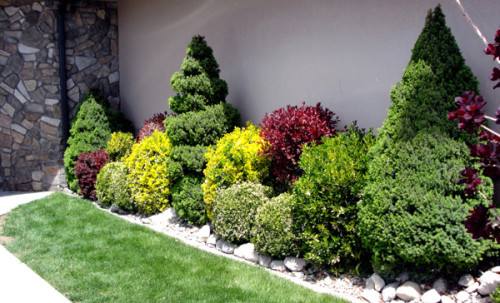
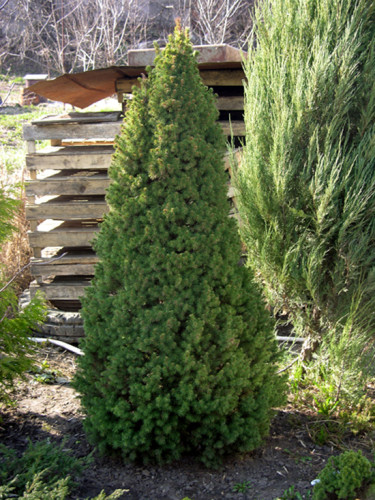
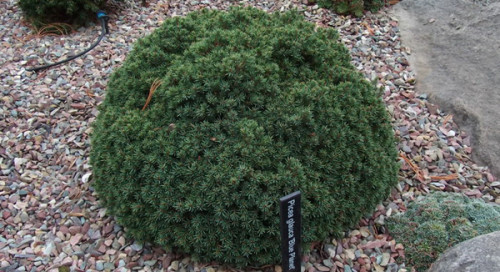
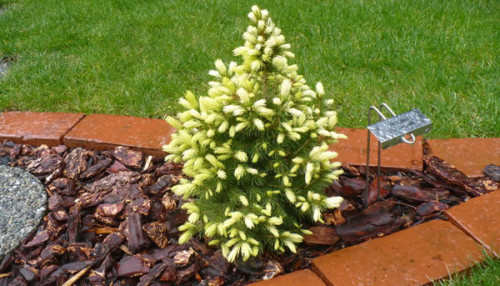
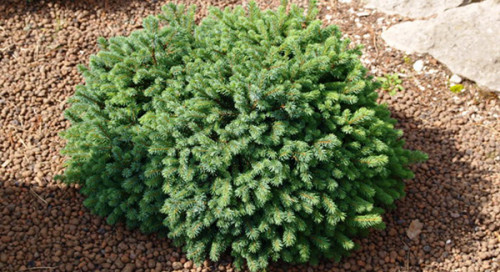
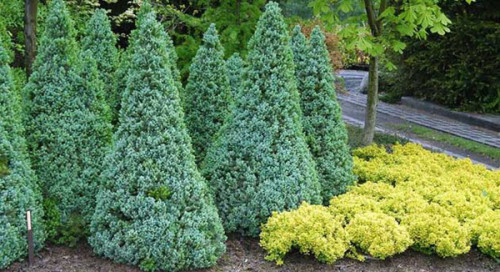
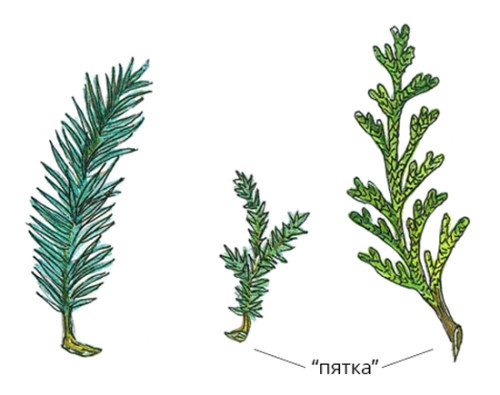
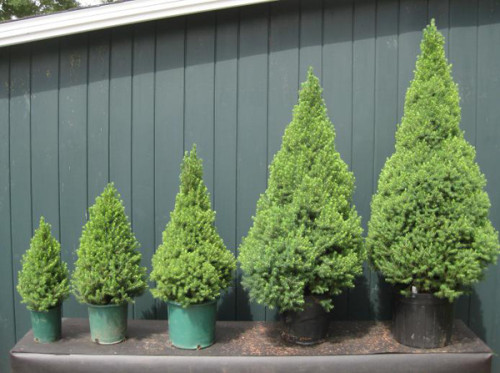
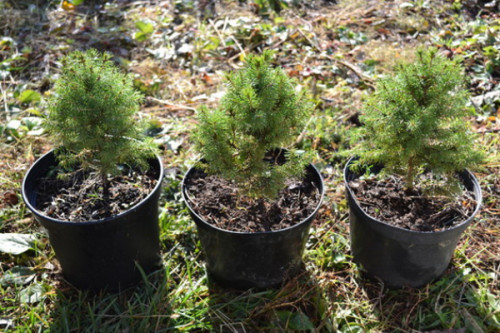












 Start a discussion ...
Start a discussion ...